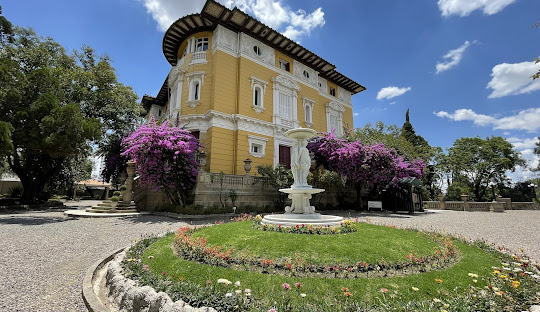Cochabamba, Bolivia
🌄 Cochabamba, Bolivia – Where Mountains Meet Eternal Spring
Overview:
Nestled in a lush Andean valley at 2,500 meters above sea level, Cochabamba is known as the “City of Eternal Spring” for its year-round pleasant climate. It’s Bolivia’s fourth-largest city but carries a relaxed, provincial charm. Famous for its food culture, colonial architecture, nearby ruins, and vibrant markets, Cochabamba is a city that flies under the radar yet surprises those who stay.
🌟 Top Attractions in Cochabamba
✝️ Cristo de la Concordia
Towering over the city, this giant Christ statue (larger than Rio’s Christ the Redeemer) can be reached by cable car or hike. The views of the Cochabamba Valley from the top are breathtaking.
🏛️ La Cancha Market
One of the largest open-air markets in South America, this chaotic maze of vendors sells everything—fresh produce, clothing, electronics, and artisan crafts. It’s gritty but authentic.
🏰 Palacio Portales
This lavish early 20th-century mansion built by tin baron Simón Patiño is an architectural wonder, blending European luxury with Andean style. A guided tour gives insight into Bolivia’s past elite.
🌺 Botanical Garden Martín Cárdenas
A peaceful escape filled with native plants and flowers, great for a shady stroll and birdwatching.
🏺 Convento Museo Santa Teresa
A serene colonial-era convent turned museum, showcasing religious art, ancient manuscripts, and Cochabamba's spiritual history.
🌄 Nature & Day Trips
🧭 Tunari National Park
Just above the city, this high-altitude park is a haven for trekking, condor spotting, and reaching the summit of Cerro Tunari (5,035m) for panoramic views.
🏞️ Incachaca & Pairumani Park
Perfect for waterfalls, river trails, and a quick dose of cloud forest, only an hour outside the city.
🏞️ Toro Toro National Park (4 hours away)
An epic day or overnight trip to see dinosaur footprints, caves, canyons, and ancient geological formations.
🍽️ Food Culture – Cochabamba is Bolivia’s Culinary Capital
Locals say “Cochabambinos live to eat”, and with reason. Portions are generous, and flavors are rich.
-
Pique a lo macho – Spicy beef, sausage, peppers, fries, and egg.
-
Silpancho – A breaded meat cutlet over rice and potatoes, topped with fried egg and salad.
-
Chicharrón – Fried pork served with mote and llajwa (spicy salsa).
-
Salteñas – Juicy Bolivian pastries (go early—they sell out!).
-
Chicha – A traditional fermented corn drink often served at local gatherings.
Top spots to try:
-
Casa de Campo (rustic Bolivian dishes)
-
La Estancia (grillhouse known for meat)
-
Paprika (upscale fusion)
-
Projecto Nativa (local gourmet with a twist)
🛌 Where to Stay
-
Mid-range: Hotel Aranjuez – colonial charm with garden views
-
Budget: Jaguar House Hostel – friendly, clean, central
-
Luxury: Gran Hotel Cochabamba – elegant and historic with a beautiful courtyard
📅 Best Time to Visit
-
Dry Season (May to October) is best for outdoor exploration and clear skies.
-
Avoid January to March, when rain is frequent and travel to rural areas can be harder.
✈️ Travel Tips
-
Altitude: Lower than La Paz, so a great spot to acclimate before high-altitude treks.
-
Safety: Stay aware in crowded markets. The city is generally safe and welcoming.
-
Transport: Cheap trufis (shared taxis) and minibuses get you around easily.
-
Language: Spanish and Quechua are widely spoken. A few locals may speak English.
🧳 Hidden Gems
-
La Muela del Diablo Hike – A sharp rock outcrop with amazing views near Sacaba.
-
El Prado – Lively central boulevard, perfect for a coffee and people-watching.
-
Villa Albina – A colonial mansion in ruins with haunting beauty.


